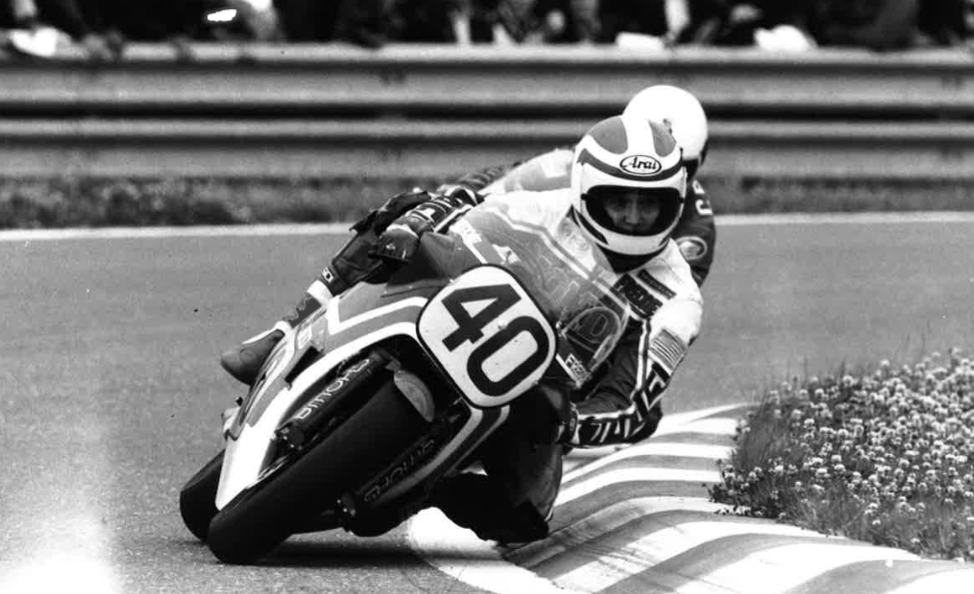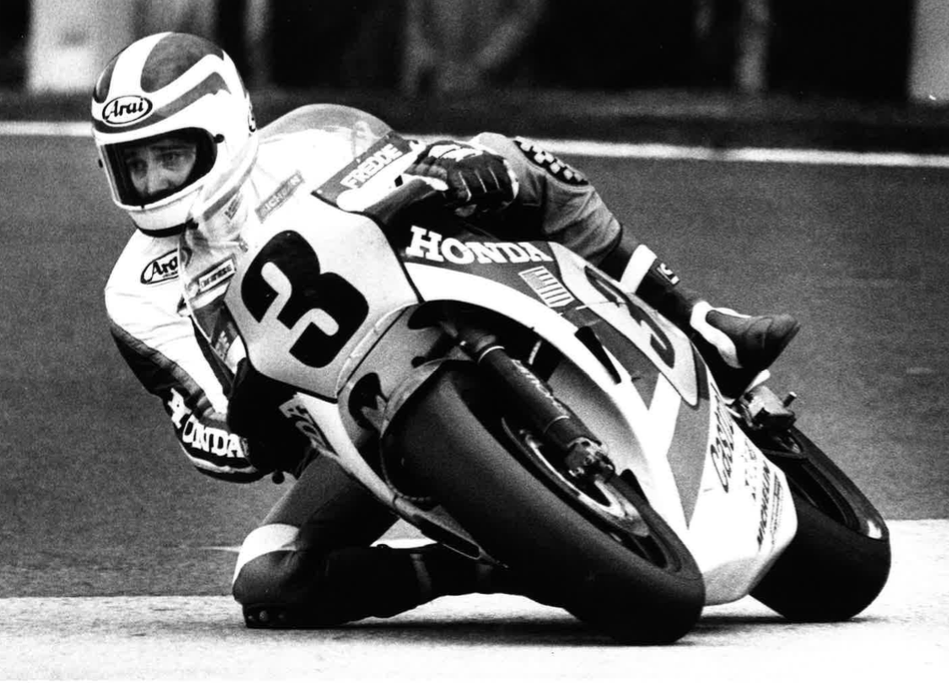Freddie Spencer – the only man to clinch the 250 and 500 GP title in the same year (1985)
Tell us about your Aussie memories?
Australia is one of my favourite places: it’s where I first rode the (HRC) 250 and 500 together at the old Surfers Paradise racetrack. One of my last really good races was at Phillip Island in ’89 – the one my ex-teammate Wayne (Gardner) ended up winning. I was catching the lead group and with three laps to go I got a little bit inpatient coming out of Honda Corner going into Lukey Heights and the front tucked. I was catching it on my knee every lap before and I didn’t catch it and went down. For sure it was the last really great grand prix I had a chance to do well in.

What’s your fondest racing memory?
Without a question the battles with Kenny (Roberts) because we were pushing each other so much. Also the 1983 season, after I won the (500cc) championship for Honda, I was invited to Mr Honda’s home in Japan and only Mike Hailwood got invited there before. He put his hands on my shoulders and said: “Thank you for winning the world championship for me”. He had two dreams when he started the company – to win at the Isle of Man (which they did in 1949) and to win the 500 world championship. For me it was an amazing personal moment because giving him his dream gave me mine.
Favourite bike?
The 1985 NSR250 and NSR500. The V4 went on to become the most successful bike in grand prix racing history – 13 world titles and the most GPs ever. I developed both these bikes, as the HRC guy, and the 250 began with a clean sheet of paper. Every bike before it was very flat, with a lot of steering angle. We gave it some ride height with the Unit Pro-Link and some trail. It was the beginning of our understanding of every bike you see today. I remember the first day at Suzuka in 1984 – I set a new track record for a 250 in six laps! It allowed me to carry more entry speed and I always over-turn the bike, using the rear to rotate it on corner entry – something Marc (Marquez) does so well today.

Best racetrack? And what made you so fast?
Spa – and not only because I won my first grand prix race there on July 4 1982. The circuit challenges your technique, precision and willingness to push it. Chuck Yeager (record-setting test pilot) was once asked how he’d survived for so long at the top of the pyramid and he said: “The ability to push it to the edge of the envelope and a little beyond – but the secret is being able to reel it back in”. That in a nutshell is what makes what we do so incredible. The ability to feel tenths and even thousandths of a second. To know where we are – to gauge each corner, in each lap.
Last racing memory
My last grand prix season (1988) wasn’t great. I had a suspension failure in Japan and went into a guardrail. At the speed I was accelerating into the rail I knew there was no way I’d survive it. I woke up in the ambulance, having busted my knee, both ankles, wrist, finger. I knew that my GP career was over – but I later got the opportunity to do one last season (racing a Ducati in the AMA Superbike Championship). So my last memory of 29 years racing isn’t that crash in Japan – it’s winning a Superbike race at Laguna Seca (1995).

What are you up to these days?
I’m currently writing my book, which will be published soon, called Feel. It’s about racing and what motorcycling has taught me about life. I also do classic events (including the Barry Sheene Festival of Speed) as it’s a great way to share my passion for motorcycling. This is my 50th year in bikes (Fast Freddie started riding at the age of four). I also do a school at Paul Ricard and events for Honda, Triumph and Yamaha.
What do you think of MotoGP as it is today?
Dorna has brought professionalism to the sport and the racing is great, but what the manufacturers can’t forget is that motorcycle racing is very local. We’ve got to get more younger riders involved – especially in countries where legislation has restricted the age limits and makes it so cost prohibitive for young riders to get a license. It’s them that drives the future of the sport at the dealer level.

Photo: Nigel Wheatley
Interview by Oscar Kornyei